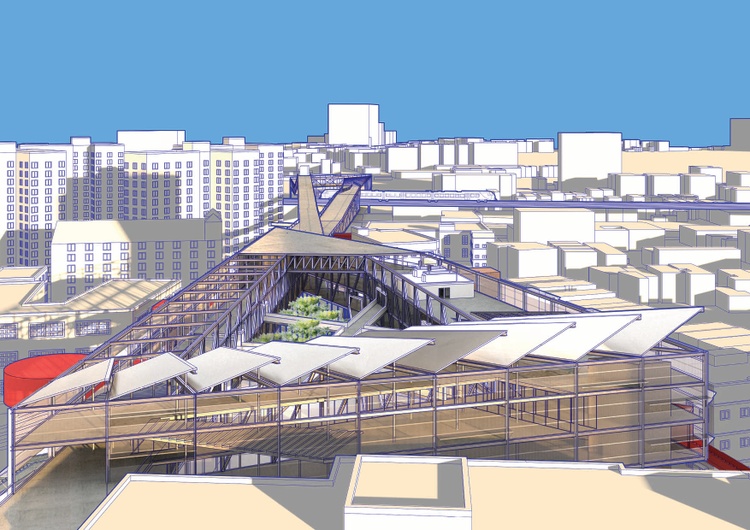Recognizing the Collaborative Process In Between Designers and Engineers in Modern Building And Construction Projects
The collective procedure in between designers and engineers is vital in contemporary construction jobs, as it balances design intent with engineering expediency. This partnership not only affects the aesthetic and useful elements of a project however likewise plays a vital role in attending to sustainability obstacles. By using effective interaction approaches and leveraging sophisticated innovations, such as Building Details Modeling (BIM), groups can work more cohesively. However, the ins and outs of this cooperation commonly existing unique difficulties that can prevent progress. Exploring these characteristics exposes understandings that can dramatically affect task results and overall sector standards.
The Significance of Cooperation
The joint synergy in between engineers and designers is crucial for the effective awareness of any building task. This partnership unites distinct expertise and viewpoints, making it possible for the assimilation of ingenious style with useful design services. By collaborating, designers and engineers can guarantee that a task not only satisfies aesthetic and useful demands yet additionally complies with security, sustainability, and monetary constraints.
Collaboration fosters a common vision, facilitating the positioning of goals and assumptions from the start. This alignment is essential in attending to prospective difficulties and mitigating dangers that might emerge throughout the task lifecycle. A collective strategy permits for the reliable appropriation of resources, optimizing both time and price.
The relevance of partnership expands to the iterative process of style and building and construction, where responses from engineers can inform architectural decisions, bring about more feasible and sustainable layouts. Alternatively, designers can inspire designers to assume creatively about just how to attain architectural honesty without endangering artistic intent. Eventually, the collective relationship in between architects and designers is not merely beneficial; it is fundamental to the production of premium, functional, and cutting-edge developed settings that meet the demands of culture.
Interaction Methods and Tools
Reliable communication methods and tools are essential for cultivating collaboration in between engineers and engineers throughout the job lifecycle. Developing clear channels of interaction is vital to make sure that all employee are aligned with project purposes, timelines, and duties. Regular meetings, both in-person and virtual, give chances for stakeholders to review progress, address issues, and make informed choices.
Using task administration software application, such as BIM (Structure Information Modeling) systems, boosts partnership by allowing real-time sharing of design alterations and technical specifications. These devices facilitate openness, permitting architects and engineers to envision modifications and assess their effect on the general task.

Shared Objectives and Task Vision

Establishing common objectives includes open discussion and a complete understanding of each self-control's payments. Designers typically concentrate on style intent, spatial partnerships, and individual experience, while designers stress architectural stability, systems performance, and compliance with guidelines (cda architects). our website When these viewpoints are straightened, the result is a cohesive job that abides by both creative ambitions and technical expediency
Moreover, a well-defined task vision promotes responsibility among staff member, motivating each individual to take ownership of their duty in achieving the wanted result. Regular check-ins and joint workshops can further strengthen this commitment, enabling for changes to be made as the project develops. Ultimately, a common vision not only boosts teamwork but likewise elevates the top quality of the last deliverable, causing effective task conclusion.
The Duty of Innovation
Leveraging modern technology has actually become crucial in boosting collaboration in between architects and engineers. The assimilation of innovative software tools facilitates real-time interaction and information sharing, enabling teams to work much more effectively and efficiently. Building Info Modeling (BIM) attracts attention as a critical innovation, permitting both engineers and engineers to create thorough 3D versions that encapsulate design intent and structural stability. This common aesthetic representation minimizes misunderstandings and streamlines the decision-making procedure.
Moreover, cloud-based systems visite site allow smooth collaboration, permitting project stakeholders to access and update job information from anywhere. This cultivates a society of transparency and liability, as modifications can be tracked and reviewed in real-time. Additionally, mobile applications further boost communication, supplying on-site teams with immediate access to job requirements and updates.
Arising innovations such as man-made knowledge and equipment knowing are likewise beginning to play a function in predictive analysis, helping teams recognize prospective concerns prior to they occur. Eventually, the role of modern technology in architecture-engineering cooperation not only improves operations performances however likewise improves advancement, resulting in even more effective project end results. By embracing these technical innovations, designers and designers can make certain a more cohesive and productive collective process throughout the building lifecycle.
Situation Studies in Successful Partnerships
Countless situation research studies highlight the profound effect of effective partnerships in between engineers and designers on task results. One significant instance is the collaboration on the High Line in New York City, where landscape engineers, designers, and city coordinators collaborated to change an abandoned railway right into a lively public park. This multidisciplinary strategy not just boosted the visual high quality but also ensured architectural security and environmental sustainability.
Another exemplary instance is the layout and building of the Sydney Opera Residence. The collaboration between architect JÃ ¸ rn Utzon and structural engineer Ove Arup exhibited innovative you could look here problem-solving. Their cooperation permitted for the legendary shell-like style while addressing complicated engineering challenges, ultimately resulting in a classic building masterpiece.
The Burj Khalifa in Dubai better shows the value of joint efforts. cda architects. The integration of style and engineering know-how made it possible for the task group to attain extraordinary elevations while sticking to safety and security regulations and aesthetic vision
These examples highlight the relevance of communication, trust fund, and shared goals. In today's complex construction atmosphere, such partnerships are necessary to browsing obstacles and providing jobs that meet both practical and visionary goals.
Conclusion
In conclusion, the collaboration in between engineers and designers is necessary for the success of modern-day construction jobs. Effective communication techniques, a shared job vision, and the assimilation of sophisticated modern technologies are vital parts that promote this collaboration.